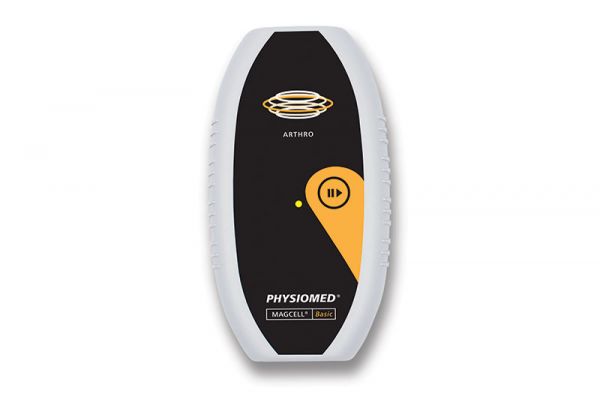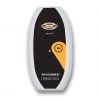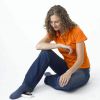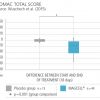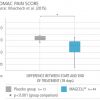Tel: +44 (0)115 9167685
"I was first diagnosed with osteoarthritis in the mid nineties, when initially it was thought I had heart problems because I was in agony with my chest. After a battery of tests, I was diagnosed with osteoarthritis of the sternum.
Costochondritis is the most common cause of sternum pain and occurs when the cartilage between the sternum and ribs becomes inflamed and irritated. Costochondritis can sometimes occur as the result of osteoarthritis but may also happen for no apparent reason.
Arthritis wise it was downhill all the way, around the same time I was diagnosed with an ‘undulating hip’ which was not picked up at birth and I was told the bones of the hip are rubbing together with the ball moving around. So far, I have managed to avoid hip surgery, but one day…
This was followed by problems with my knees undergoing five arthroscopic procedures before undergoing two total knee replacements. I was told my knee problems were initially due to sports injuries. “Did I hear someone laughing?” Because these days I am not very sporty but through the 80’s and 90’s I use to play badminton two or three times a week. I walked everywhere and could easily walk long distances, both dancing and swimming where very much a part of my week. Living in Cape Town in the early 80’s paddle skiing became my favourite outdoor activity, and it was wonderful to embrace the warmth of the Indian Ocean, not so nice in the Atlantic Ocean which some might call refreshing but not for me.
If all the above is not enough, my cervical spine and spine are also deteriorating with too many medical terms to list and explain here. Simply put, my cervical spine and spine are degenerating and for good measure, let's throw in a few neuropathies, which severely effect my arms and hands.
Often when I am standing in the kitchen preparing food and cooking, I get lower back pain. Much to most kitchen installers disbelief, my tiny kitchen is built for me. The problem with kitchen units is they are all built to a standard size, which does not account for whether you are tall or short. I discovered early on in married life that my backache was worse every time I went into the kitchen to prepare a meal or wash dishes. Therefore, over the last 30 years whenever I have had a new kitchen, my work tops are a couple of fractions lower than the norm. This does not stop me using standard sized machines, it just means legs/wheels might need to be lowered which puts less strain on my back when standing.
Painkillers have been apart of my life for as long as I can remember, but me and medications do not mix and there is a growing list of medications that create horrible side effects. Nobody knows why this happens to me, my GP says I am an anomaly! Once diagnosed, I am not one for going to see my GP often, I tend to read and research and find what is right for me because I am a big believer in self-care. The good thing about this is when I do venture into the surgery, I always feel as if I am taken seriously and my GP does listen.
Last year I had a nasty bout of sciatica, enough to put me in hospital for five hours and was given enough pain relief that when I was discharged, I was as high as a kite, totally incoherent, could not walk in a straight line and it was two days before I could function again. Me and medication do not mix.
Writing I find cathartic, and I am sure that helps with pain relief, but sometimes we all need more.
Usually, me and gadgets do not play nice together, usually because I get very bored with the tedium of setting them up and then using them so in most cases, they end up in the back of a cupboard never to be seen again. However, there has been one big exception... In August, this year Mary Fickling asked whether I had thought of using the Magcell Arthro. I had conversations with both Julie & Mary from PhysioPod UK/Physio Equipent and after a lot of procrastinating on my part, I finally went ahead and bought one.
OMG! This lightweight machine with a pulse I can barely feel, has a simple push button on/off switch and runs for 2.5 minutes, better still you can safely do back-to-back treatments. On average, depending on which area I want to work on for pain relief, I use it three times that’s 7.5 minutes. No time wasted and pain relief is instant.
The big surprise was the lasting effects the Magcell had on my lower back. After using the Magcell for seven days, the lower back pain had disappeared and when it decides to reappear, this little marvel works wonders and quickly. I have ulna neuropathy in both arms so the same as my lower back, three treatments back-to-back and I am pain free. This little machine has the same effect on my hands and wrists.
There is something comforting about the whirring sound, the Magcell is not loud, it does not distract you when you are listening to music or the TV. You can hold a conversation without having to raise your voice. The Magcell uses two batteries, it is used every other day and in three months I have only just changed the batteries.
Normally I am quite sceptical of claims made by manufacturers on how machines can make a difference to health issues. I do not say this lightly, but the Magcell Arthro has made a huge difference to my life, it has not found its way to the back of the cupboard and sits nicely within easy reach on my coffee table."
.png)
How does MAGCELL® ARTHRO help?
Through a patent-registered, innovative procedure, MAGCELL® ARTHRO is able to create exceptionally strong pulsating magnetic fields of up to 100 mT (1000 gauss) with selective frequency ranges despite its small size. Time-variable magnetic fields can function as transfer media for electric fields. Providing that – like MAGCELL® ARTHRO – the field force is sufficiently high, electro-magnetic fields can be induced in the tissue beyond the internationally recognised threshold for biological effectiveness. Through the possibility of direct application and the resulting close distance of the magnetic field to the application area, MAGCELL® ARTHRO also ensures minimum loss of magnetic field strength, transporting it deep into the tissue layers (electrode-free electrotherapy). Its battery operation and thus constant readiness enables the execution of a therapy programme through repeated short treatments in contrast to treatments previously only offered in doctor’s surgeries.
MAGCELL® ARTHRO is ideal for painful hip, knee and jaw joint arthritis, Hallux rigidus and valgus and a range of other arthritic conditions. Clinical studies on the complementary use of MAGCELL® ARTHRO for acute knee arthritis (1,2) have shown that amongst others, the following clinical effects can be achieved:
- Significant relief from inflammation pain
- Improvement in joint movement
- Reduction of knee joint circumference
- Significant reduction of WOMAC index
Magnetic field therapy is available in a range of types and appearances. Various forms of therapy do not have sufficient scientific proof of their effectiveness. The MAGCELL® ARTHRO medical product cannot be compared with ‘pulsating signal therapy (PST)’, ‘MultiBioSignal Therapy (MBST)’, ‘Nuclear Magnetic Resonance Therapy’, ‘TENS' or other transmission forms such as magnetic field mats or coils.
MAGCELL® ARTHRO works with therapy parameters investigated in empirical and clinical research. There are no known side effects or intolerance associated with the use of MAGCELL® ARTHRO. Based on a large amount of patient feedback, regular therapy may enable reductions in the dosage of medication, such as non-steroidal anti-rheumatic agents.
References
1 Hitrov N, Portnov V (2008): MAGCELL® ARTHRO in der Behandlung von Arthrose im Kniegelenk. Die Naturheilkunde 3:25-27.
2 Wuschech H., von Hehn U., Mikus E., Funk R.H. (2015): Effects of PEMF on patients with osteoarthritis: Results of a prospective, placebo-controlled, double-blind study. Bioelectromagnetics 36(8), 576–585.
Latest News
-
Osteoarthritis: Hobbling to Happy - Magcell Arthro Reduces Pain and Swelling
- May 09, 2024 -
Mrs B Beats Bunion Pain with the Magcell Arthro
- Jan 23, 2024 -
Benign Prostatic Hyperplasia (BPH) Self Care with Magcell Microcirc
- Jan 03, 2024 -
New, Improved, LASS-Expert Is Now Available
- Oct 14, 2023 -
LASS-Expert Now Improved
- Sep 29, 2023
Tags
- Magcell (2)
- pain (1)
- jack russell (1)
- injury (1)
- athlete (1)
- fracture (1)
- cartilage (1)
- osteoarthritis (1)
- Mag-Expert (1)
- magcell microcirc (1)
Archives
- May 2024 (1)
- January 2024 (2)
- October 2023 (1)
- September 2023 (1)
- September 2022 (1)
- February 2022 (1)
- October 2021 (5)
- June 2021 (4)
- December 2020 (1)
- November 2020 (1)


